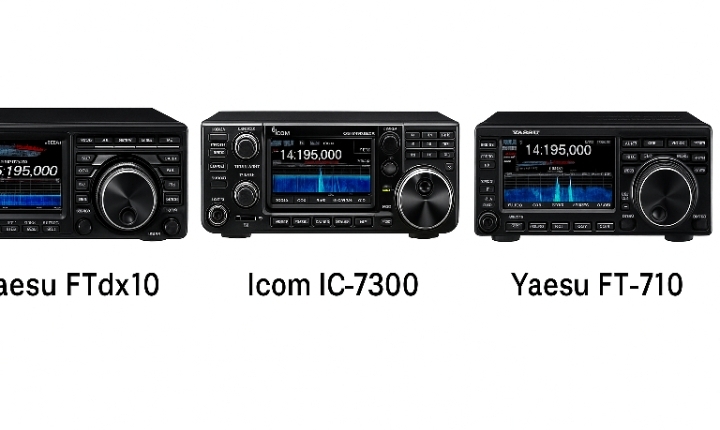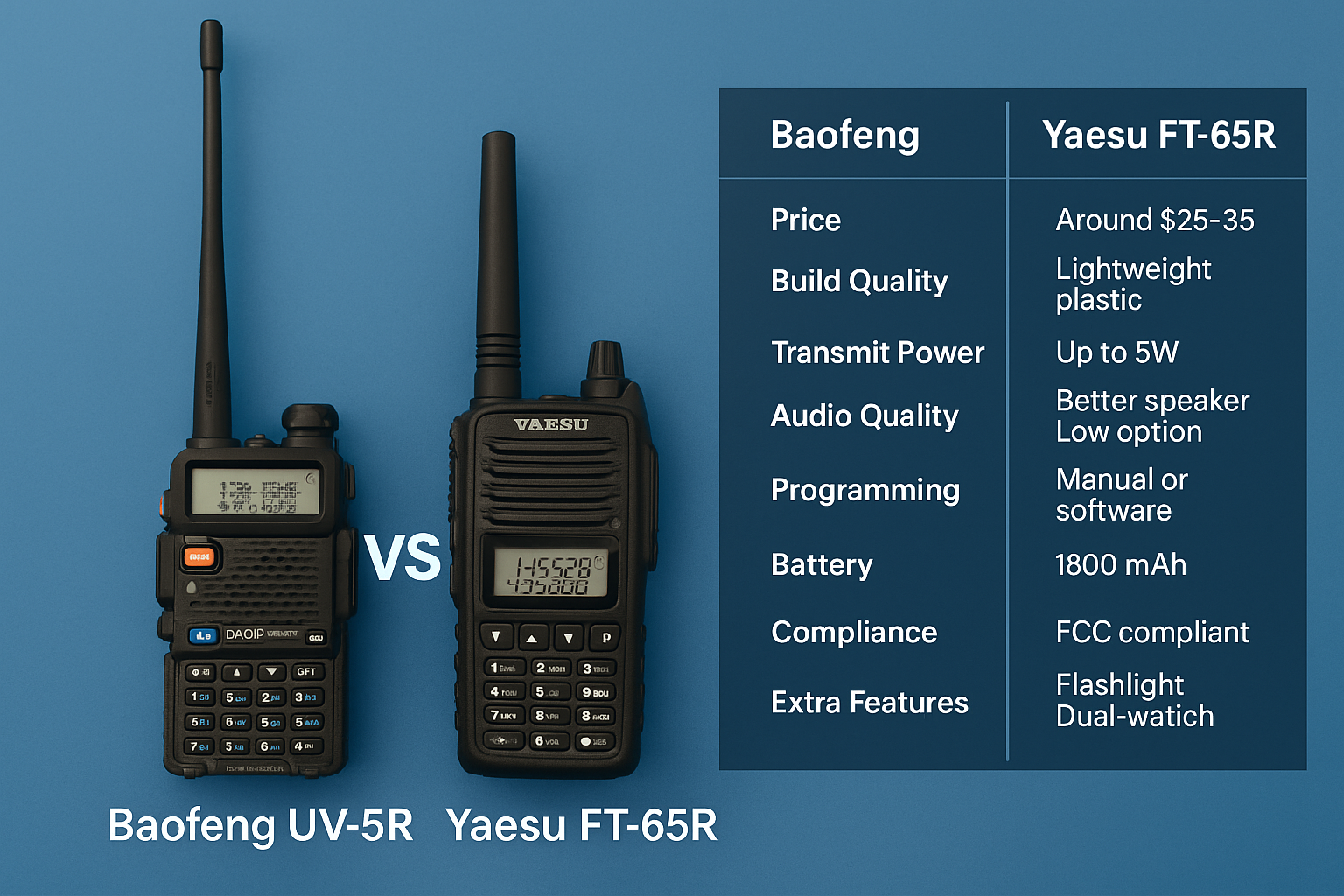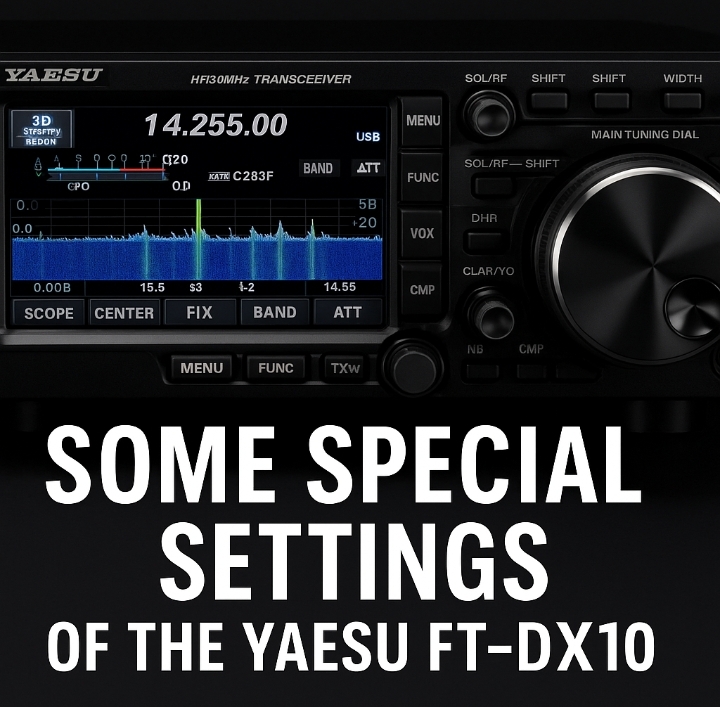In the world of modern amateur radio transceivers, three names frequently rise to the top for serious operators and newcomers alike: the Yaesu FTdx10, Icom IC-7300, and Yaesu FT-710. These radios are known for blending high-performance features, advanced SDR technology, and user-friendly interfaces at a mid-range price point. But how do they stack up against each other?
In this comparison, we’ll explore the key features, strengths, and potential drawbacks of each to help you decide which transceiver best suits your operating style and shack setup.
1. Overview of the Contenders
- Yaesu FTdx10: A 100W HF/50 MHz hybrid SDR transceiver with exceptional receiver performance, 5-inch touchscreen, and strong filtering capabilities.
- Icom IC-7300: A revolutionary direct-sampling SDR radio that brought high-quality SDR to the mainstream with ease of use, a 4.3-inch touchscreen, and reliable performance.
- Yaesu FT-710: Yaesu’s newer SDR model designed to compete directly with the IC-7300, featuring a similar touchscreen interface, 100W output, and advanced DSP filtering.
2. Receiver Technology & Performance
- FTdx10: Uses a hybrid SDR architecture combining Narrow Band SDR with down-conversion and roofing filters. It boasts superior RMDR and BDR, which helps isolate weak signals in crowded band conditions.
- IC-7300: Fully direct-sampling SDR. While impressive and easy to use, its dynamic range is slightly behind the FTdx10 in heavy interference environments.
- FT-710: Direct-sampling SDR similar to the IC-7300, but with enhanced Yaesu filtering options (including the latest DNR and DNF features). Performance is close to the FTdx10 but lacks its roofing filter stage.
Winner: FTdx10 for advanced filtering and higher-grade dynamic range, especially under contest or pile-up conditions.
3. Display and Interface
- FTdx10: 5-inch color touchscreen with 3D Spectrum Stream (3DSS), waterfall display, and customizable menus. Navigation is fluid and intuitive.
- IC-7300: 4.3-inch color touchscreen with real-time spectrum and waterfall. Still one of the most user-friendly radios for beginners.
- FT-710: 4.3-inch touchscreen with a clear spectrum/waterfall display and similar layout to the FTdx10.
Winner: FTdx10 for its larger and more visually dynamic screen. The IC-7300 and FT-710 are tied for second.
4. Audio and Signal Processing
- FTdx10: Offers a three-stage parametric EQ for SSB/AM modes and exceptional audio shaping. Advanced DSP settings give users fine control over audio clarity.
- IC-7300: Clean audio with a built-in EQ. DSP options are effective but not as customizable.
- FT-710: Strong audio performance with updated filtering and audio shaping inherited from the FTdx101 series.
Winner: FTdx10, with FT-710 close behind. The IC-7300 performs well but offers fewer options for in-depth customization.
5. Build Quality and Ergonomics
- FTdx10: Solid construction with a compact, rugged design. Some knobs feel a bit tight, especially around AF/RF gain.
- IC-7300: Durable and simple, with spacious front panel controls and great tactile feedback.
- FT-710: Similar footprint to IC-7300 with modernized Yaesu design, comfortable to use.
Winner: IC-7300 for ease of use. The FTdx10 is well-built but slightly cramped in knob spacing.
6. Digital Modes and Connectivity
All three radios support digital modes (FT8, PSK31, RTTY, etc.) via built-in USB interfaces. They work flawlessly with popular software like WSJT-X, FLdigi, and logging tools like N1MM or HRD.
- FTdx10: Adds high-speed CAT control and superior filtering for weak-signal modes.
- IC-7300: Plug-and-play ease makes it the go-to for many digital users.
- FT-710: Combines the best of both worlds with plug-and-play and advanced DSP.
Winner: Tie. All radios offer solid digital mode performance with slight edge to FTdx10 for weak signal handling.
7. Remote Operation
- FTdx10: Optional SCU-LAN10 allows remote LAN or internet control.
- IC-7300: Lacks native remote capability, requires third-party solutions like RS-BA1.
- FT-710: Supports Yaesu LAN control similar to FTdx10.
Winner: FT-710 and FTdx10 tie for remote operation readiness.
8. Price and Value
- FTdx10: Around $1,500. Offers high-end performance in a mid-range price.
- IC-7300: Around $1,100–$1,200. Still the best value-for-money SDR for beginners and seasoned hams.
- FT-710: Around $1,200–$1,300. Newer and offers updated tech with great balance.
Winner: IC-7300 for value. The FT-710 is a worthy step-up, and the FTdx10 offers top-tier performance for a little more cost.
Conclusion: Which One is Right for You?
- Choose the FTdx10 if you’re a serious DXer, contester, or value the absolute best receiver performance and advanced filtering. It’s ideal for crowded bands and demanding RF environments.
- Choose the IC-7300 if you’re newer to the hobby, want rock-solid performance, and value simplicity, affordability, and reliability. It’s the most user-friendly SDR rig available.
- Choose the FT-710 if you want modern features and excellent DSP in a sleek, affordable package. It sits comfortably between the two and is ideal for digital and voice operators.
Each of these radios is a strong performer. Your choice depends on your specific needs, budget, and operating preferences.
Still unsure which to pick? Try visiting your local ham radio club or dealer and put your hands on each—sometimes the best radio is the one that just feels right.



